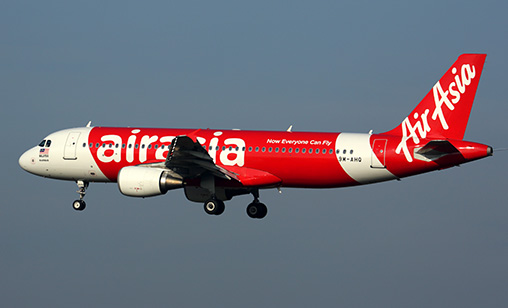Year End Review: Low-Cost Carriers
Fleet overload
December 1st 2014
When it comes to the Asia-Pacific LLC sector in 2014, it’s been too much, too soon. Read More » The breathtaking speed at which the region’s low-cost carriers have been travelling hit a road bump in 2014 that has inflicted considerable damage on the sector. The examples of the pain are everywhere. The line of A320s, with their TigerAir tails, parked at a desert facility in Australia’s Red Centre. The decision of Jetstar Asia to suspend growth plans until market conditions improve. And, most revealing of all, AirAsia, the region’s biggest budget airline company, planning to defer some deliveries and focus on cost cuts across the group.
It’s become clear that the Asia-Pacific’s budget sector has grown too fast and that over-capacity is sapping revenue. Too many new seats are being thrown into the air so the inevitable has happened: fares go down, yields erode.
During the year, the capacity binge reverberated across the region, also straining full service carriers’ revenue targets.Former Cathay Pacific Airways and British Airways chief executive, Rod Eddington, said in an industry speech in Australia, where he is now based, that Asia-Pacific airlines have endured tough periods in the past, usually because of external events such as the 1997 Asian financial crisis in 1997 or the outbreak of severe acute respiratory syndrome (SARS) in 2003.
“But this is different. This time it seems the problem has been precipitated by a lot of carriers buying a lot of aircraft and putting them into the market at the same time, particularly no-frills carriers,” he said.
 |
Despite this situation, existing airlines and newcomers alike appear keen to enter the budget market, no matter how loud the warning bells ring. At the beginning of the year, there were 47 LCCs, or variants of the model, in the region. As the year draws to a close, the number is approaching 60.
And while some LCCs have curtailed expansion, the airlines in the sector still started the year with a fleet of around 1,000 aircraft and 1,500 orders. If October’s record order from India’s Indigo for 250 A320s is taken into account plus hundreds more commitments by other Asia-Pacific no-frills operators, the order book will top the 2,000 by December 31.
According to consultancy, CAPA, Southeast Asia is the only region in the world where there are more planes on order than are in existing fleets. Of the world’s 15 busiest low-cost international routes, nine are in Southeast Asia. The domestic markets of Indonesia, the Philippines and India are dominated by LCCs, with Thailand and Malaysia going the same way.
The situation has spelt trouble for some airlines. Jetstar Asia’s difficulties have been well documented, including the long, costly and still to be decided attempt to set up Jetstar Hong Kong. Tigerair losses have seeped into investor, Singapore Airlines’ (SIA) financials, to the company’s detriment. Tigerair sold its Philippines offshoot to Cebu Pacific, as well as shutting down Tigerair Mandala in Indonesia and selling off the remaining 40% stake it had in Tigerair Australia to Virgin Australia – now the sole owner – for A$1.
To survive, it is to receive a cash injection, through a share issue, which could result in SIA owning up to 70% of the budget airline. On the other hand, the region’s big low-cost players – AirAsia and its subsidiaries, Indonesia’s Lion Air and Citilink and Cebu Pacific – are pressing ahead, convinced that the region’s expanding demand for flying will redress the capacity imbalance.
A Hong Kong-based aviation analyst, Andrew Orchard, of CIMB, said LLCs have indicated they will reduce capacity by leasing aircraft due for delivery to them to other airlines. “But any measure they take will be quite temporary. I am not convinced they have altered their mindset. They are taking a wait-and-see approach, trying to be one of the survivors. The only way you can do that is build up your network.
“The biggest and fittest will survive and a few airlines will pull back or go under. I think it will happen over a number of years,” he said. The savior, at least for some of the long-haul LLCs, such as SIA’s Scoot and Jetstar, is the arrival of more fuel efficient aircraft, such as the B787 Dreamliner, in their fleets. Short-haul budget airlines also are looking forward to the economic benefits of a new narrow-bodies, the B737MAX and the A320neo.
Yet the entrepreneurial nature of those who run LCCs means the major players – and many of the minor ones – remain extremely optimistic about their futures, convinced that the present disruption to their progress is temporary. Azran Osman-Rani, chief executive of Malaysia’s medium to long-haul - and unprofitable – LCC, AirAsia X, conceded competition is the most intense ever in Southeast Asia.
But he said it is “a short term, one to three-year crunch, before demand catches up to capacity. When you look at the situation in the context of population and economic development, then demand will very quickly catch up with this excess capacity”. He said airlines need to hold their nerve during the capacity crunch.